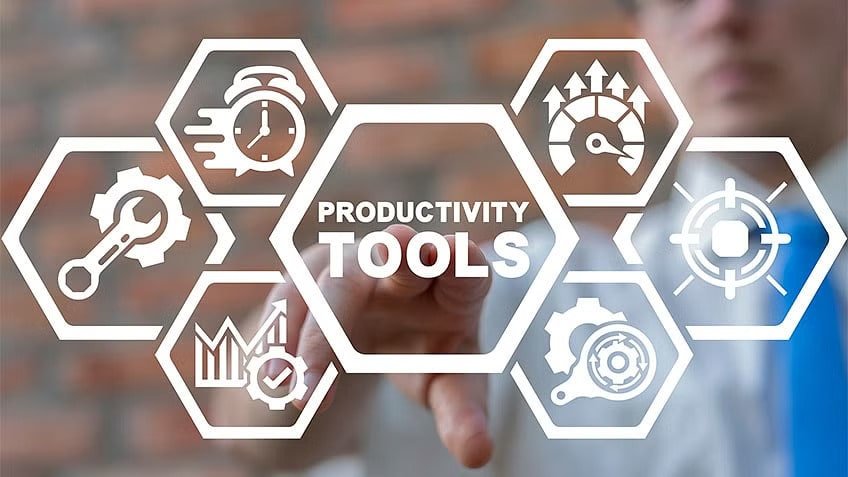In the fast-paced world we live in today, mastering your workflow is essential for success and maintaining a healthy work-life balance. Whether you’re a student, a professional, or an entrepreneur, the right tools can make a significant difference in how efficiently and effectively you manage your tasks. In this article, we will explore some essential tools that can help you streamline your workflow and boost productivity.
1. Task Management Apps:
The foundation of a productive workflow lies in effective task management. Task management apps such as Todoist, Trello, and Asana help you organize and prioritize your tasks. These apps enable you to create to-do lists, set deadlines, and categorize tasks based on their importance and urgency. By having a clear overview of your tasks, you can focus on what needs to be done and avoid feeling overwhelmed.
2. Note-Taking Software:
Good ideas can strike at any moment, and it’s crucial to have a reliable note-taking tool to capture them. Applications like Evernote, OneNote, and Bear allow you to jot down thoughts, create checklists, and organize your notes in a way that makes sense to you. The ability to access your notes across devices ensures that you always have your ideas and important information at your fingertips.
3. Calendar Apps:
A well-organized calendar is a key component of a successful workflow. Calendar apps like Google Calendar, Microsoft Outlook, and Apple Calendar help you schedule and manage your appointments, meetings, and deadlines. Color-coding and reminders can further enhance your ability to stay on top of your schedule, ensuring that you never miss an important event.
4. Communication Tools:
Efficient communication is essential for collaboration and project success. Tools like Slack, Microsoft Teams, and Zoom facilitate real-time communication and collaboration among team members. These platforms provide a centralized space for discussions, file sharing, and video conferencing, reducing the need for lengthy email threads and fostering a more dynamic and responsive working environment.
5. Time Tracking Software:
Understanding how you spend your time is crucial for improving productivity. Time tracking software, such as Toggl and RescueTime, helps you monitor the time you allocate to different tasks and projects. By identifying time-wasting activities and optimizing your workflow, you can make better-informed decisions about how to allocate your time for maximum efficiency.
6. Project Management Tools:
For larger and more complex tasks, project management tools like Jira, Monday.com, and Basecamp can be invaluable. These platforms provide a comprehensive view of the entire project, from planning and execution to monitoring progress. They often include features such as Gantt charts, task dependencies, and team collaboration tools, making it easier to manage projects with multiple stakeholders.
7. Automation Software:
Automating repetitive tasks can save you a significant amount of time and reduce the risk of errors. Automation tools like Zapier, IFTTT, and Microsoft Power Automate allow you to create workflows that connect different apps and automate routine processes. For example, you can automate data entry, email notifications, and file transfers, freeing up your time for more critical tasks.
8. Cloud Storage Services:
Accessing your files from anywhere is essential for a flexible and dynamic workflow. Cloud storage services like Google Drive, Dropbox, and Microsoft OneDrive enable you to store, share, and collaborate on documents in real-time. This ensures that you and your team always have the most up-to-date information, promoting seamless collaboration regardless of your location.
9. Password Managers:
Security is a crucial aspect of any productive workflow. Password managers like LastPass, 1Password, and Dashlane help you generate and store strong, unique passwords for your various accounts. By eliminating the need to remember multiple passwords, these tools enhance security while saving you time that would otherwise be spent on password management.
10. Mind Mapping Software:
For brainstorming and visualizing ideas, mind mapping software such as XMind, MindMeister, and MindManager can be powerful tools. These applications allow you to create visually engaging mind maps that help organize thoughts and concepts, making it easier to see the big picture and identify connections between different ideas.
In conclusion, mastering your workflow is a journey that involves finding the right tools that align with your preferences and work style. By incorporating these essential productivity tools into your routine, you can enhance your efficiency, reduce stress, and achieve a better work-life balance. Remember, the key is not just to use these tools but to integrate them seamlessly into your workflow to create a system that works best for you. With the right tools at your disposal, you can take control of your tasks, projects, and ultimately, your success.

